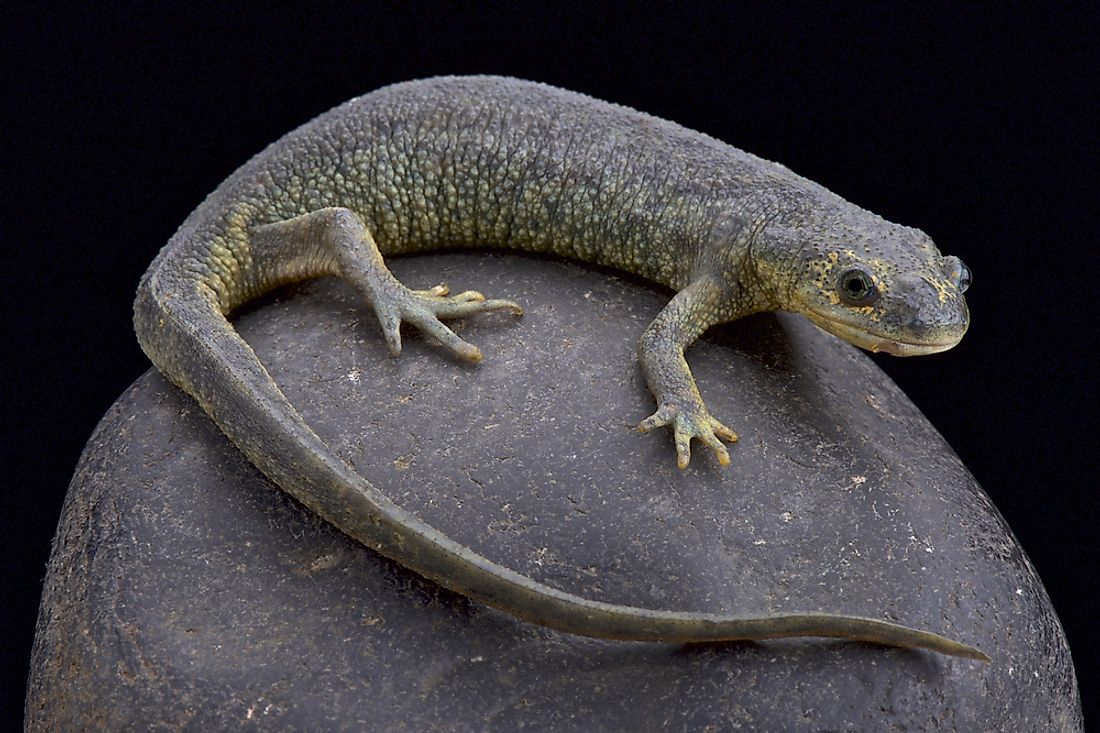Native Amphibians Of Algeria

Among Algeria’s amphibians, Edough ribbed newts, Algerian ribbed newts, and North African fire salamanders are threatened. Algeria’s wetlands, mountains and forests are home to multiple amphibian species, most of which also inhabit its North African neighbors. The following are amphibians native to Algeria.
Native Amphibians Of Algeria
Sahara Frog (Pelophylax saharicus)
The Sahara frog is a species in the Ranidae family native to Algeria as well as its North African neighbors. The frog is abundant in wetlands including irrigated land, lakes, ponds, and rivers. The frog appears green, brown or mixed with spots on the limbs and other areas. The Sahara frog is large in size, with its head as equally long as it is wide. The frog can live up to 6 years in the wild, and its diet consists of fish, frog eggs and insects. The Sahara frog is listed as least concern as there has been no notable decline in its population. Potential threats include drainage of wetlands, water pollution, and habitat fragmentation.
Algerian Ribbed Newt (Pleurodeles nebulosus)
The Algerian ribbed newt is a salamander species in the family Salamandridae, native to Algeria and Tunisia. The salamander inhabits rivers, ponds, swamps, and cisterns. The salamander is characterized by an olive colored upper part with dark blotches and wart-like lumps. The male’s tail is longer than its body and also longer than that of the female. Mating and larval development for the salamander take place in water and its fertilization is internal. The Algerian ribbed newt is listed as vulnerable, and it is threatened by pollution and agricultural encroachment.
North African Fire Salamander (Salamandra algira)
The North African fire salamander inhabits oak or pine forests, especially in Mount Edough in Algeria. The salamander is found under logs and stones, as well as in caves. Its body is a glossy black or brown with yellow spots. Some of them have red spots, especially on the head. The salamander hibernates during the summer and breeds during the winter on land. The animal’s diet includes insects, snails, slugs and worms. The North African fire salamander is listed as vulnerable, and it is threatened by deforestation, cattle overgrazing, hunting for the pet trade, and agricultural expansion.
Berber Toad (Bufo mauritanicus)
The Berber Toad is a species in the Bufonidae family native to Algeria. The toad has a wide habitat range from cork oak forests, stony and rocky regions, shrub land, rivers, marshes, agricultural land and urban areas. The toad breeds in either fresh or still wetlands and the female lays between 5,000 and 10,000 eggs. The Berber toad is listed as least concern due to its broad habitat range and its tolerance of many habitats. Potential threats include habitat degradation, pollution, and human activity.
Other native amphibians of Algeria
The Edough ribbed newt (Pleurodeles poireti) is a threatened amphibian in the Edough Peninsula of northern Algeria. Extensive agricultural practices have led to habitat loss and pollution of its habitats. The Mediterranean painted frog (Discoglossus pictus) is another threatened amphibian in Algeria as a result of extensive agriculture.
Native Amphibians Of Algeria
| Native Amphibians of Algeria | Scientific Name |
|---|---|
| Sahara Frog | Pelophylax saharicus |
| Algerian Ribbed Newt | Pleurodeles nebulosus |
| North African Fire Salamander | Salamandra algira |
| Berber Toad | Bufo mauritanicus |
| Edough Ribbed Newt | Pleurodeles poireti |
| Mediterranean Painted Frog | Discoglossus pictus |











